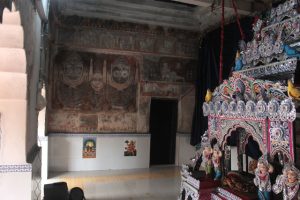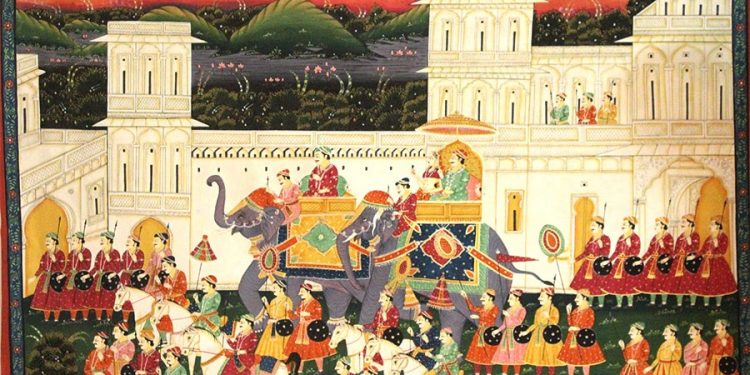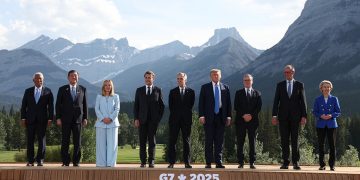BHUBANESWAR: Murals have added gloss to the walls of various state temples since centuries. However, these pictographic depictions have lost their charm due to lack of care and awareness.
Historian Jitu Mishra travels extensively to explore mural paintings in Ganjam and Puri. Orissa Post interacted with him to delve deeper into the subject.
Mishra said, “Murals are a way of telling story through colours on stony caves and temple walls. One can also find Rock Shelter Paintings at various sites in the state. The findings of rock paintings and pictographic writings in Western Odisha: Vikramkhol in Jharsuguda, Manikmada and Ushakothi in Sundergarh, Gudahandi in Kalahandi and Jogimath in Nuapada districts indicate existence of prehistoric art in Odisha.”
The paintings range from small geometrical and floral patterns to big animal motifs and human figures. Humans are shown hunting, fighting, dancing and performing domestic chores. Most of these wall paintings follow a sequential and horizontal pattern.

The colours that are used are: red extracted from iron, brown from copper and white from lime compounds. The characters of the pictographic writings appear to be a mix derived from Mohanzdaro and Brahmi scripts.
The Ravana Chhata rock at Sitabinji in Keonjhar district contains a painting of a very high order, depicting the procession scene of a king riding a caparisoned elephant with soldiers holding shafts and banners, followed by a female attendant. This painting carries reminiscence of Ajanta murals.
“Splendid murals adorn the interiors of Jagannath Temple. ‘Buddha Vijay’ painting in the ‘Jagamohana’ of Lakshmi Temple and ‘Kanchi Vijay’ in the ‘Jagamohana’ of Jagannath temple are examples of the rich artistic skills of state painters,” he said.
These examples show that the state has an incredible mural heritage. However, under the shadow of mural heritage of South India and Rajput-Mughal North India, many of our friends are hardly aware of Odisha’s historic mural tradition. The ceiling of Jagannath Temple at Dharakot in Ganjam district was commissioned by King of Dharakot. These rich examples of Odia art are fading rapidly in the state.
At the temple, the murals of Lord Jagannath, his elder brother Balabhadra and Devi Subhadra are the first to catch visitors’ eyes and the next are scenes from Krishna Leela and Ramayana.

“The depiction of Anantasayi Vishnu is yet another major draw among the murals of the mutt. One also finds the episode of ‘Samudra Manthan’ or the ‘Churning of Ocean’ on the monastic wall,” said Mishra, who visited the place recently.
The Bada Odia Mutt has the largest concentration of Puri paintings on its walls drawn in the 19th century. It was established in the 15th century by Atibadi Jagannath Das, a great religious poet who composed the Odia Bhagabat. The image of Atibadi Jagannath Das is preserved here. The mutt in Puri boasts the finest religious art of the region.
The Gangamata Matha located in Bali Sahi in Puri is yet another monastery where one can see traces of Puri murals of 19th century. Belonging to Gaudiya Sect, the matha is located beside the sacred Swetaganga Tank. These murals need to be preserved to ensure the continuity of the state’s rich cultural heritage.






































